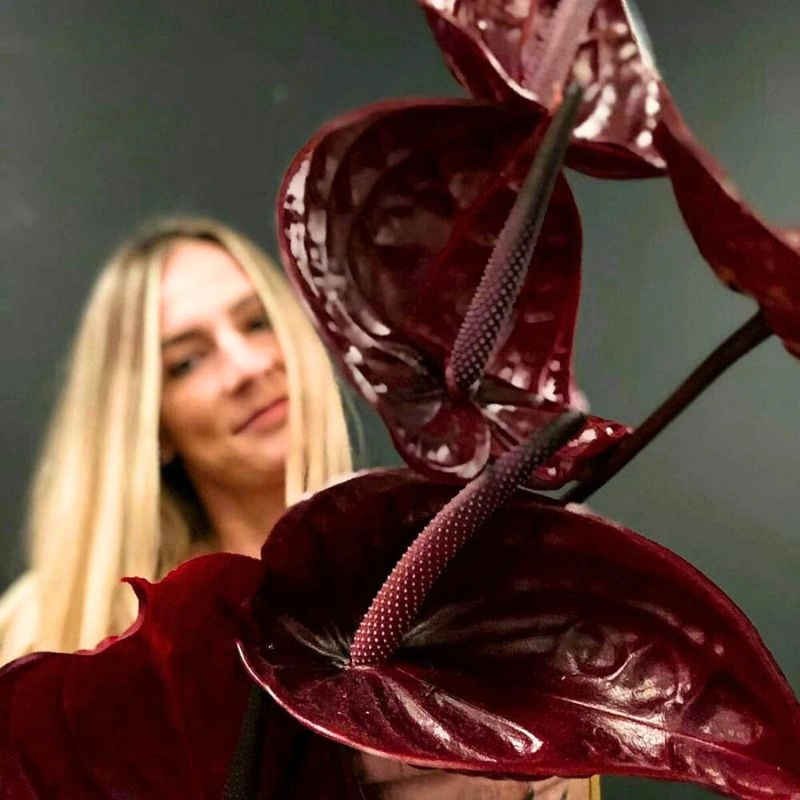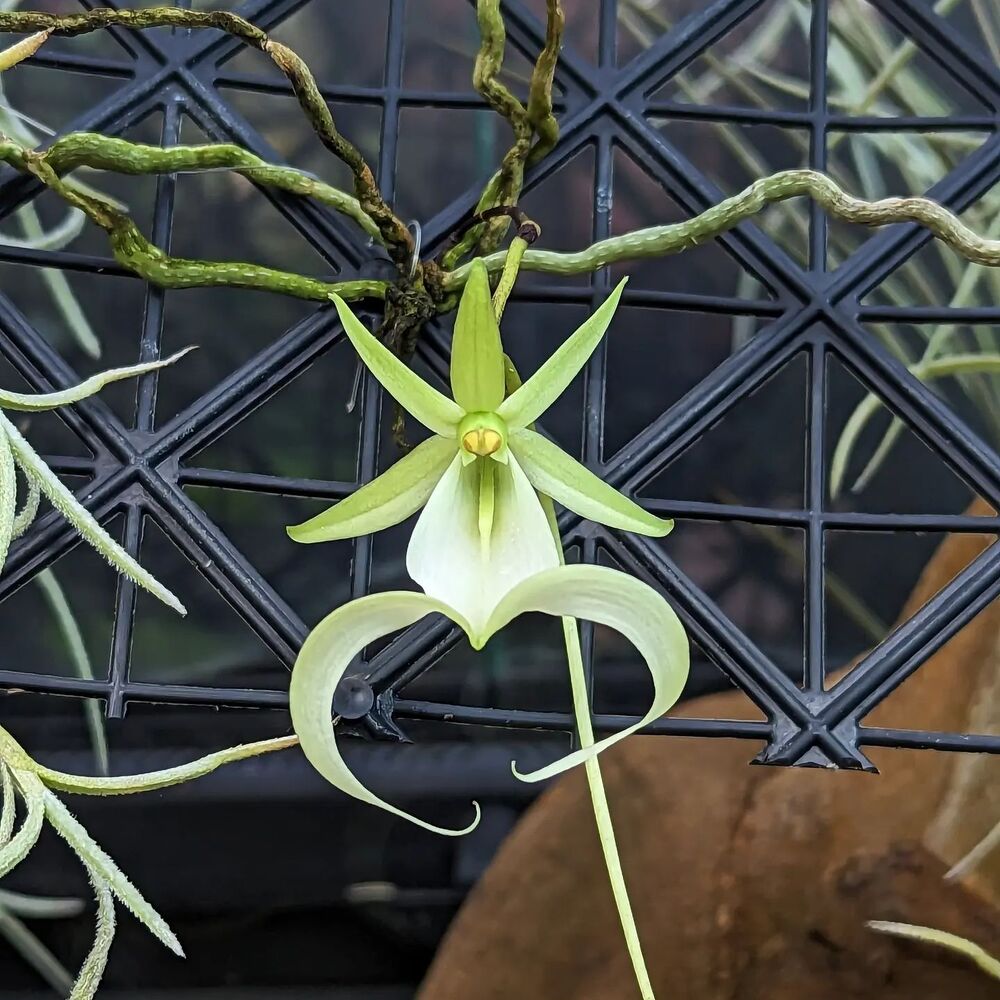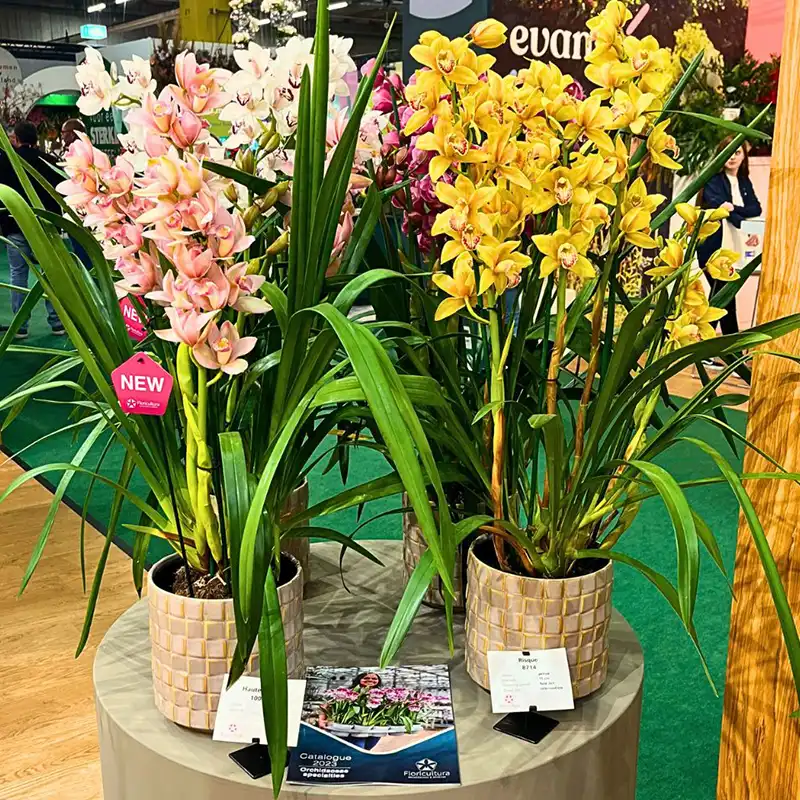The flamingo flower plant, also often called Lily Anthurium (Anthurium andraeanum) or laceleaf, is a tropical plant native to South and Central America. It was first discovered by explorative European botanists in the late 19th century and commercialized into the horticultural world in the early 20th century. The Anthurium flamingo flower plant is well known for its unique heart-shaped spathe and the spadix protruding from it. The perfect combination of spathe and spadix makes this plant elegant and highly attractive.
These Anthuriums, also commonly called tailflowers or pigtail plants, are commercially planted in tropical regions, including South American countries, but also grown in the Netherlands. Also, this flamingo flower plant is ideal for use in both the cut flower market and as a potted houseplant to elevate the look and character of your home or office space. Even more, these lilies are not finicky; grown either commercially or just for aesthetic appeal. They, essentially, are easy to grow and care for.
The Origin and Meaning of Lily Anthurium
The origin of the name anthurium was derived from the Greek words 'anthos', meaning flower, and 'oura' (tail). The naming strategy was based on the unique structures of the plant, with its spathe and spadix formation, creating a flower and tail at the same time. Native to the warmer areas of the Caribbean and South America, especially in Colombia and Ecuador, this plant's other common name—flamingo flower—is inspired by its unique appearance and distinctive colors, with pink, red, or orange flowers that resemble the colors of a flamingo's beak.
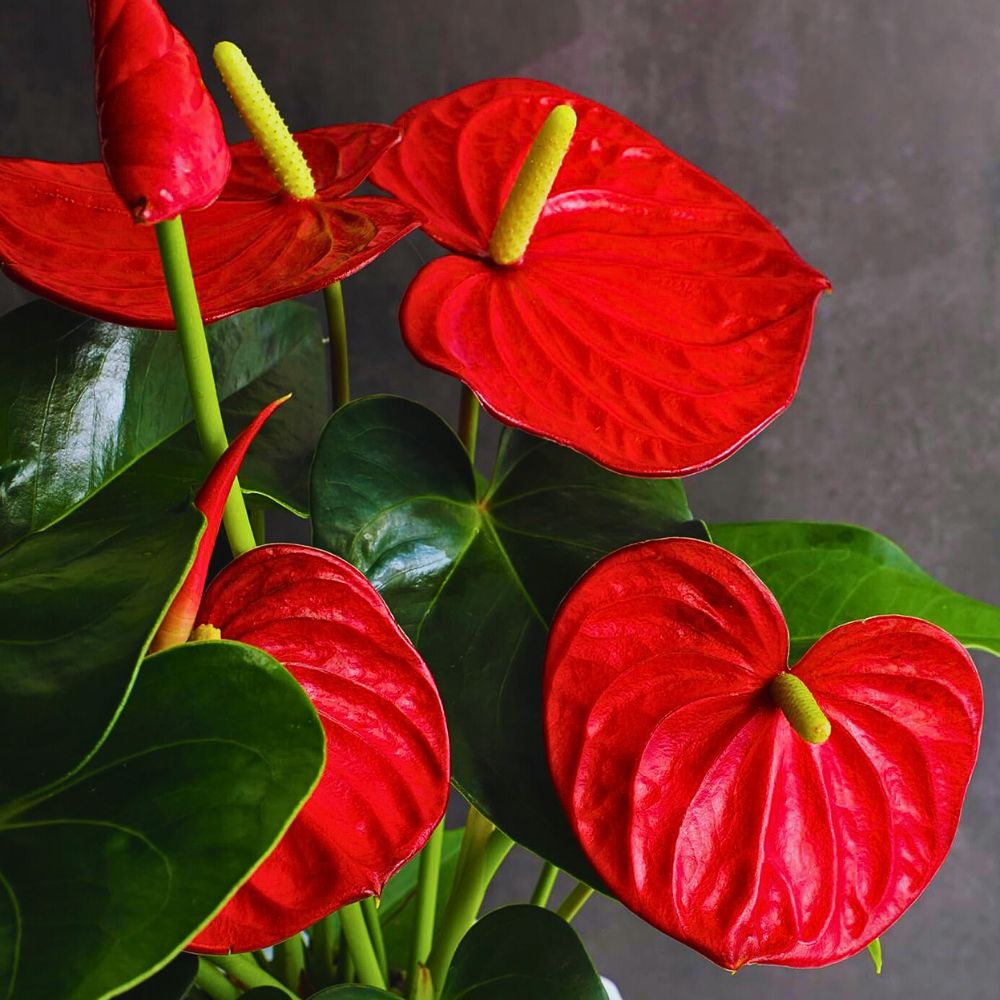
Anthurium lilies are an exotic beauty that can easily thrive anywhere from the office to your home, with little care needed. Due to this, the Anthurium lily is a symbol of hospitality because of the warmth and character it adds to any space, making it desirable and welcoming. Essentially, the flamingo flower plant is an ideal choice for every plant enthusiast and decorator looking for a balance of beauty and luxurious plants to create a striking appearance within their spaces.
Due to continuous excellence in breeding power, there is a wide array of anthurium varieties to choose from. Breeding companies of the Anthuriums, like Anthura and Floricultura, just to name a few, are continuously developing and bringing into the market unique and intriguing anthurium varieties.
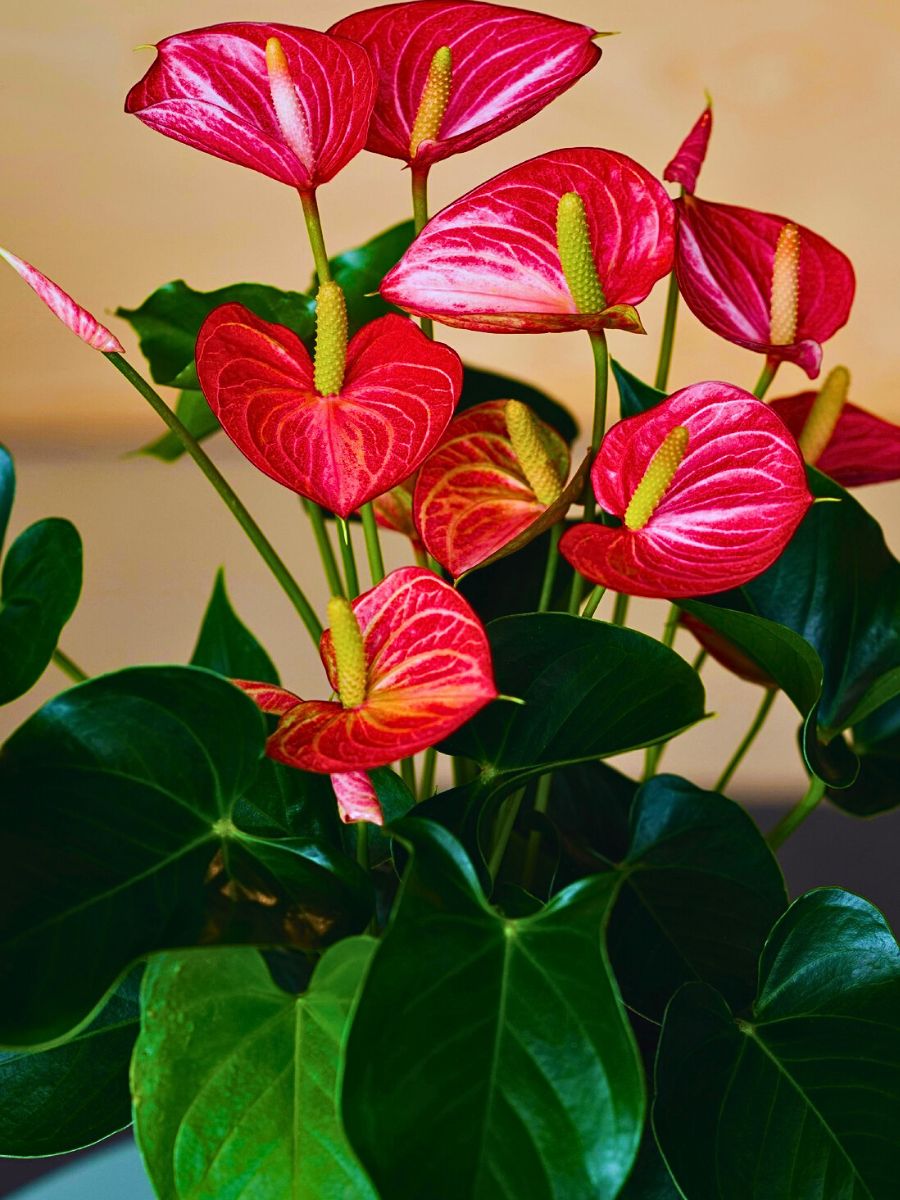
Growing and Caring for Flamingo Flower
Though there are some growing and caring variations depending on the varieties of anthuriums, generally, they are not complicated houseplants to grow and care for. Learning how to take care of the flamingo lily requires understanding the basic requirements that revolve around optimal light provision, temperature, humidity, watering, constant pruning, and application of fertilizer to stimulate growth.
Despite caring variations, there are must-have conditions for your Anthurium flamingo flower plant to thrive.
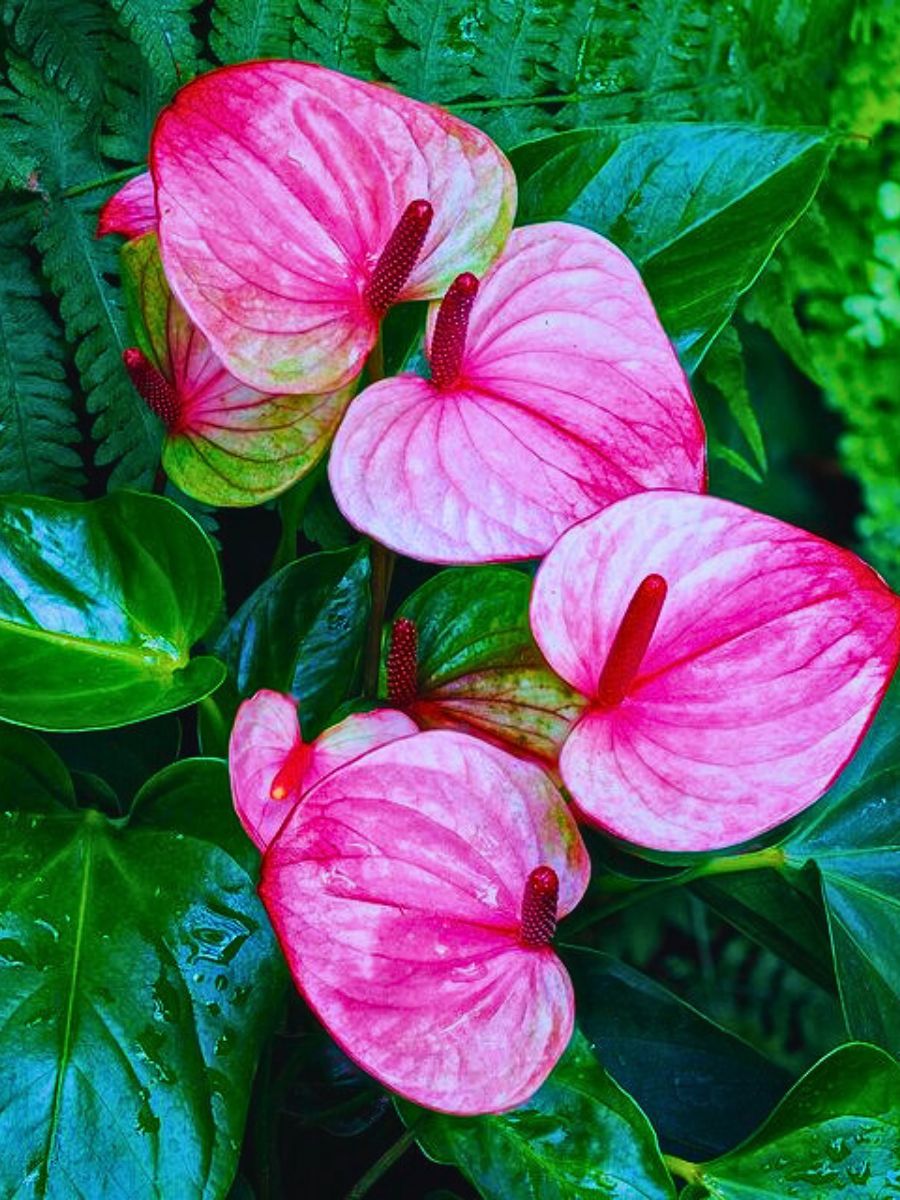
Flamingo Lily Light Requirements
Anthurium lilies prefer bright indirect sunlight exposure; exposing them to bright direct and scorching sun will harm the plant immediately. Understanding proper flamingo lily light requirements is crucial. When growing in the tropics and outside, consider growing your flamingo lily under the shade.
Temperature That Keeps The Flamingo Lily Fit
Given that it is a tropical plant, by default, it prefers to stay on the warmer side. Colder temperatures, including frost, are detrimental to the flamingo flower plant. Precisely, temperatures ranging from 18°C to 27°C (65°F to 80°F) should suffice for optimal flamingo lily care.
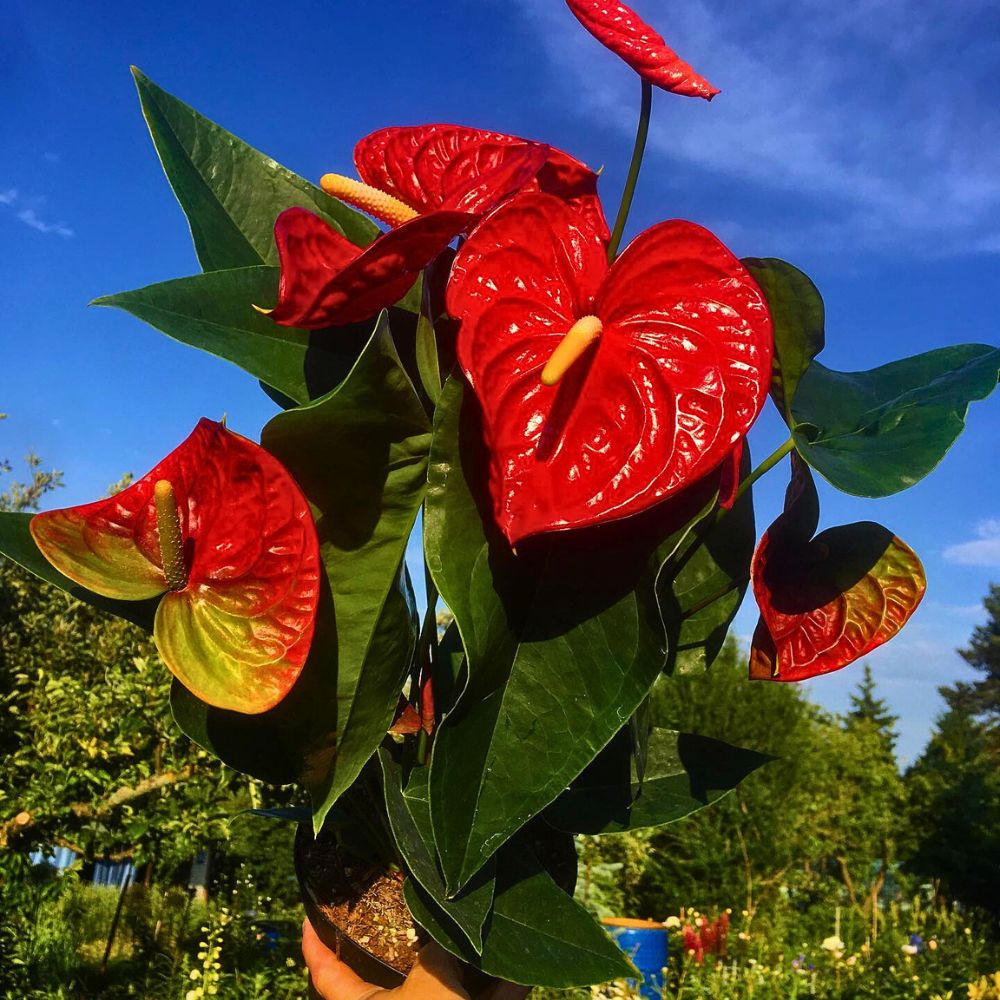

Watering Needs of Anthurium Lily
It is crucial to grow your Anthurium lily in a well-draining potting mix to avoid issues of waterlogging and eventually root rot. These Anthurium lilies are not overly thirsty plants and can be watered once a week, depending on how fast the top 2 inches of the soil dries out.
The size of the container used during the planting of your flamingo lily also determines the amount of water and frequency of watering. The bigger the container, the more water you have to apply, and reduce the interval to three days, but for smaller to medium-sized containers, a one-week interval should be fine.
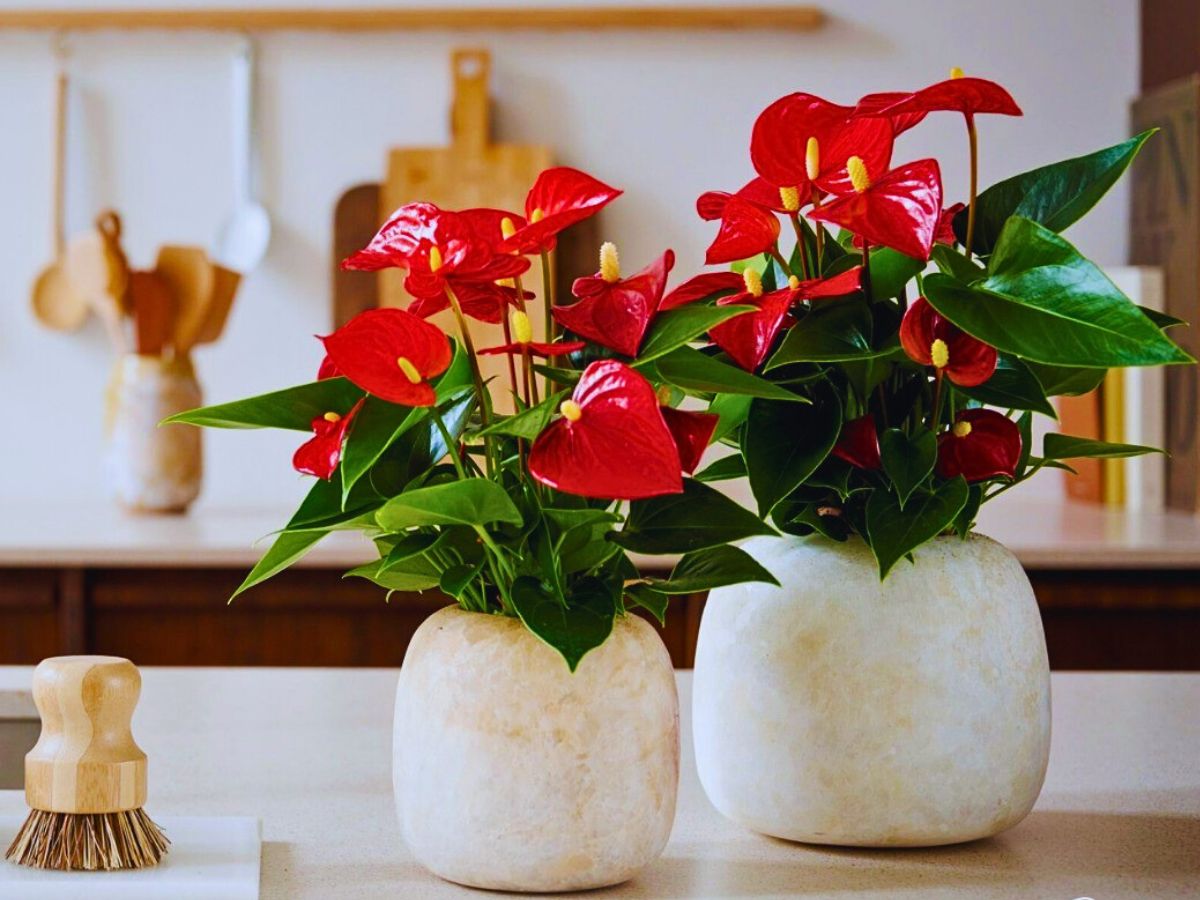
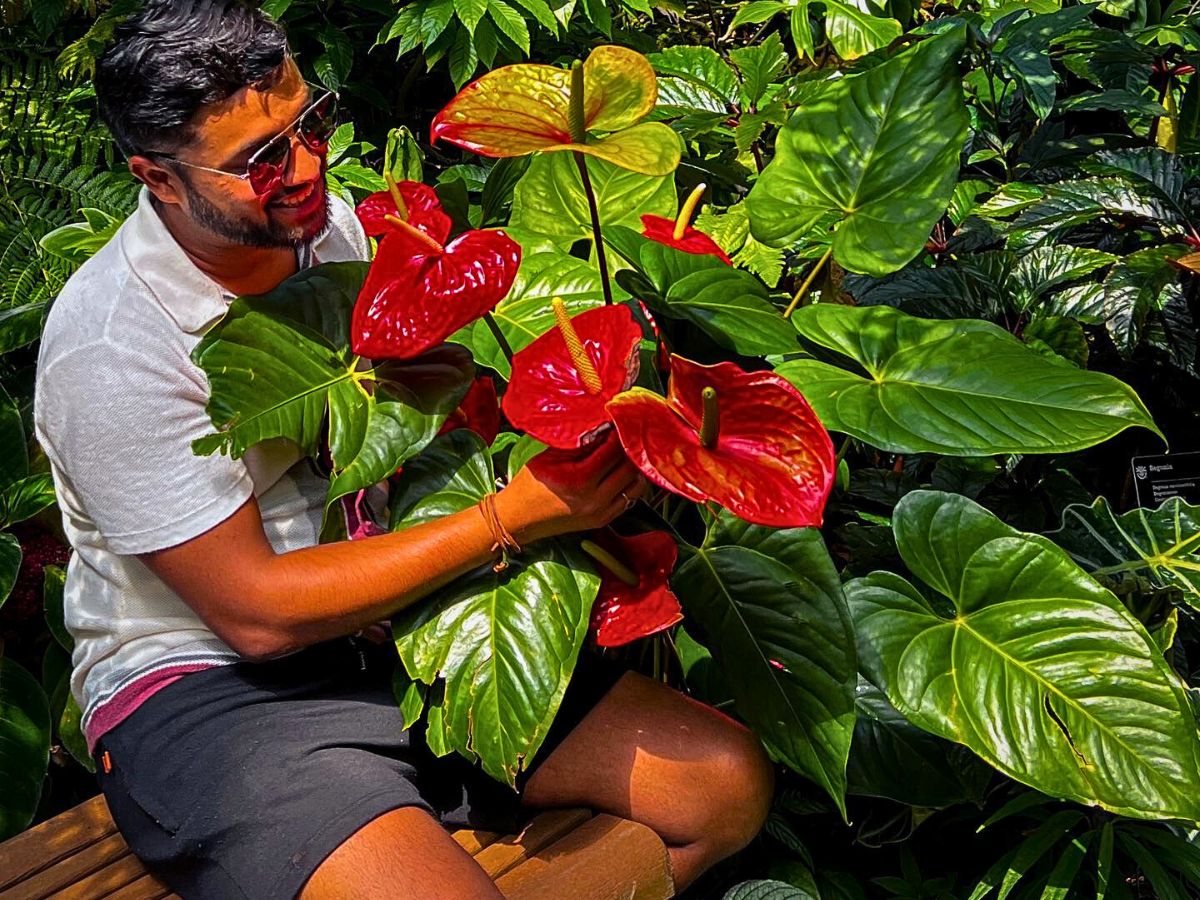
Maintaining Humidity for Anthurium Flamingo Flower
High humidity is vital to your Anthurium flamingo flower plant's well-being. Aim for humidity of 60% and above, and using humidifiers should be considered if necessary, but constantly misting the plant should be sufficient for proper flamingo lily plant care.
Pruning Anthurium Flamingo Flower Plant
It is important to constantly monitor your anthurium lily to check if there is any sign of leaves yellowing. Yellow leaves should be pruned, including flowers that have overstayed. Pruning encourages new growth and the well-being of your flamingo flower plant.
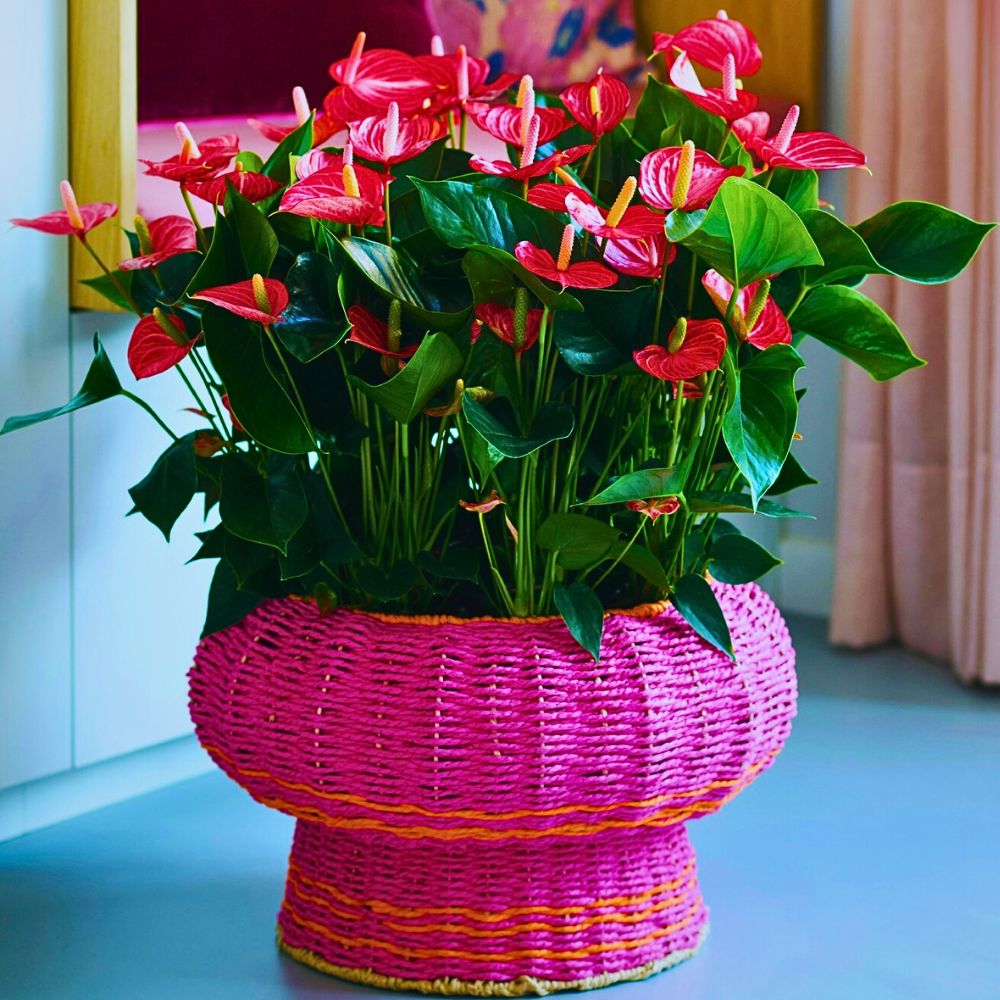
Repotting Anthurium Lilies
The interesting fact about repotting Anthurium lilies is that it does not have to happen just immediately after getting your plant. Only repot when the plant becomes root-bound, which should be at least 2-3 years.
Fertilizing the Anthurium Lilies
Fertilizing the Anthurium lilies stimulates their growth and enhances the growth speed. Application of fertilizer should be done during the growing season only, for 6 weeks with a well-balanced liquid fertilizer. Avoid fertilizing during the winter since this will be detrimental to your flamingo lily plant.
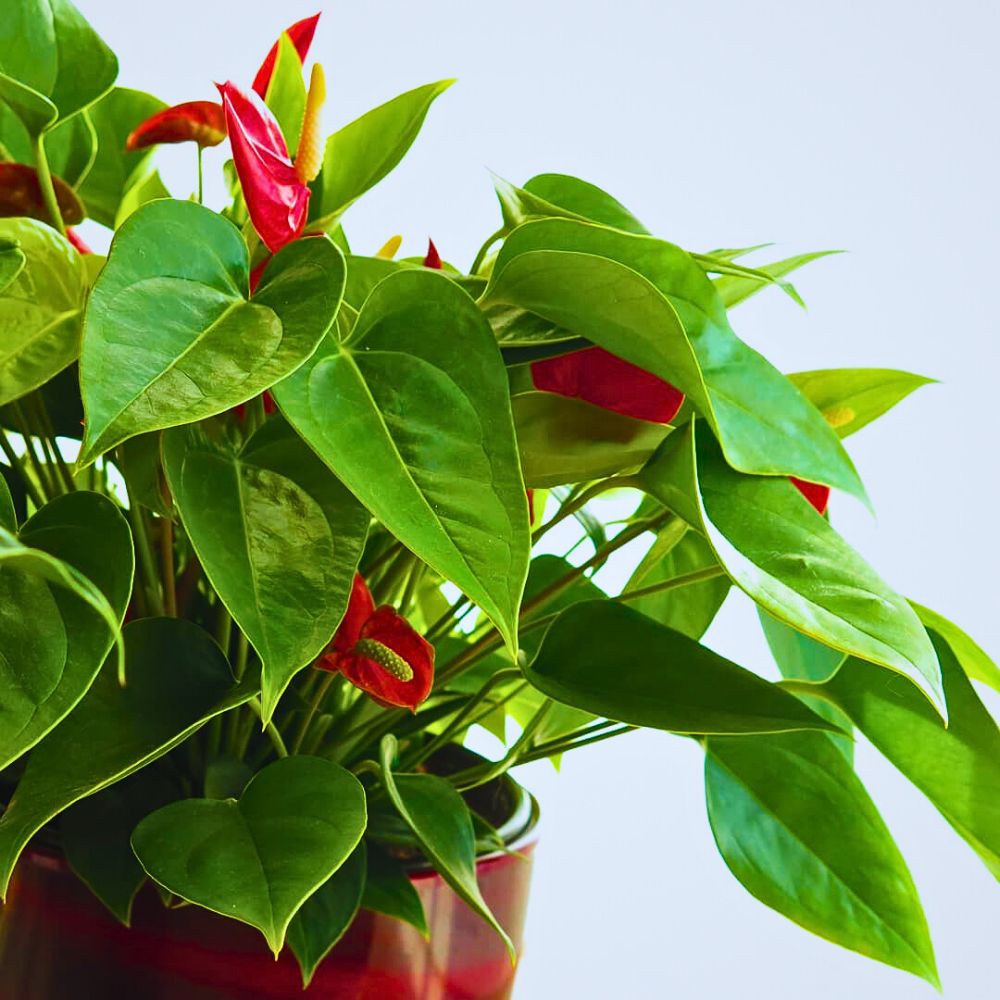
Common Pests and Diseases Associated With Anthurium Lilies
The Anthurium lily is not susceptible to extremely harmful pests and diseases. However, be on the lookout for the following common houseplant pests: mealybugs, aphids, and spider mites. The use of neem oil or soapy water will aid in getting rid of these pests, but always spot the infestation earlier to mitigate the risks promptly.
Bacterial blight, caused by extremely high humidity and temperatures, leads to bacterial infestation, which affects the foliage tissues and leads to scorching. Lowering humidity and temperatures subsequently should help control the issue. Disinfect all tools used during the cutting of the flamingo flower plant to prevent the spread of the bacterial blight.
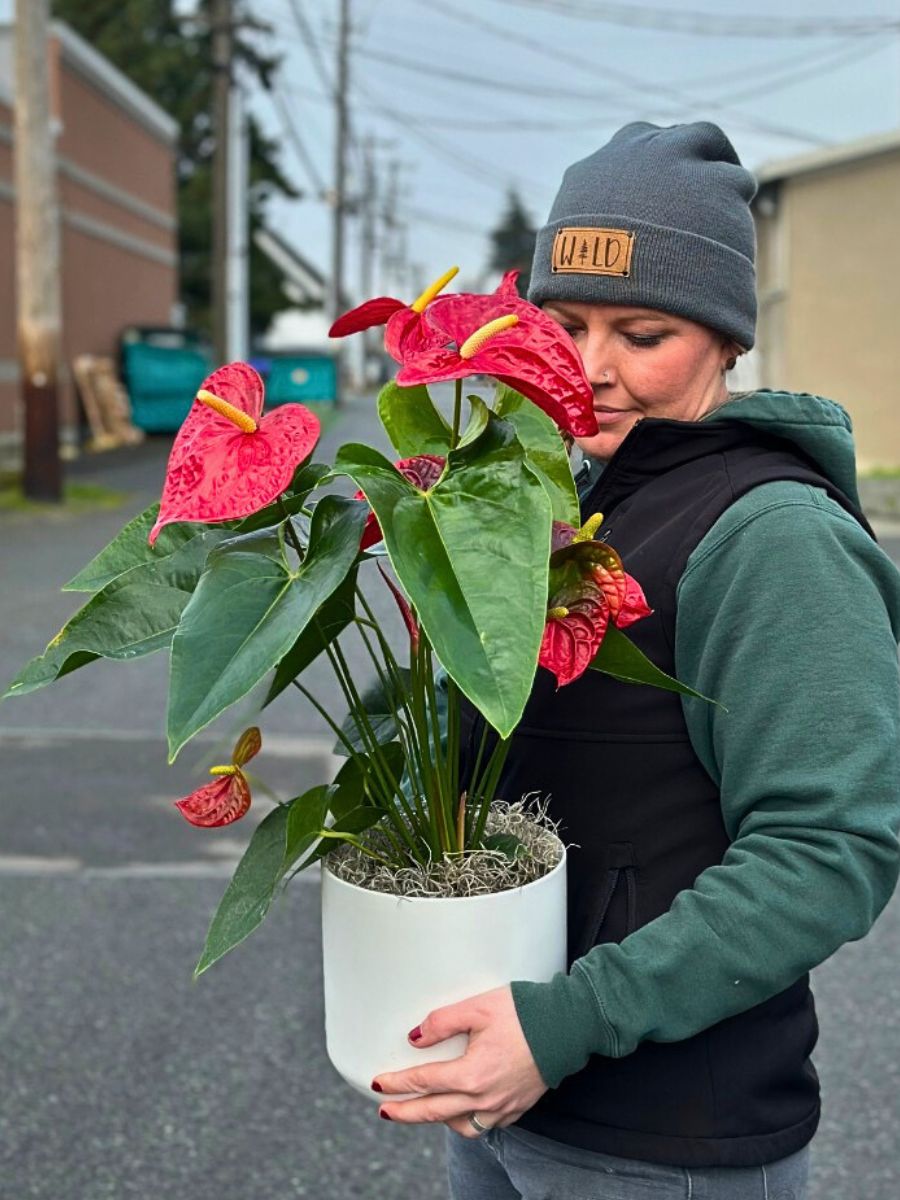
Bacterial wilt is another common disease associated with the flamingo flower. It can be identified by the yellowing of the leaves. Improvement of hygiene, including disinfection of all the tools used, should be effective in responding to the spread. The use of fungicides with phosphoric acid can be used to prevent the infection, as well.
How to Propagate Flamingo Lilies
Once you are a proud parent and owner of an Anthurium flamingo flower plant, you can easily multiply it to create many plants out of it. The best time to execute the propagation process is during the growing season, probably summer and spring.
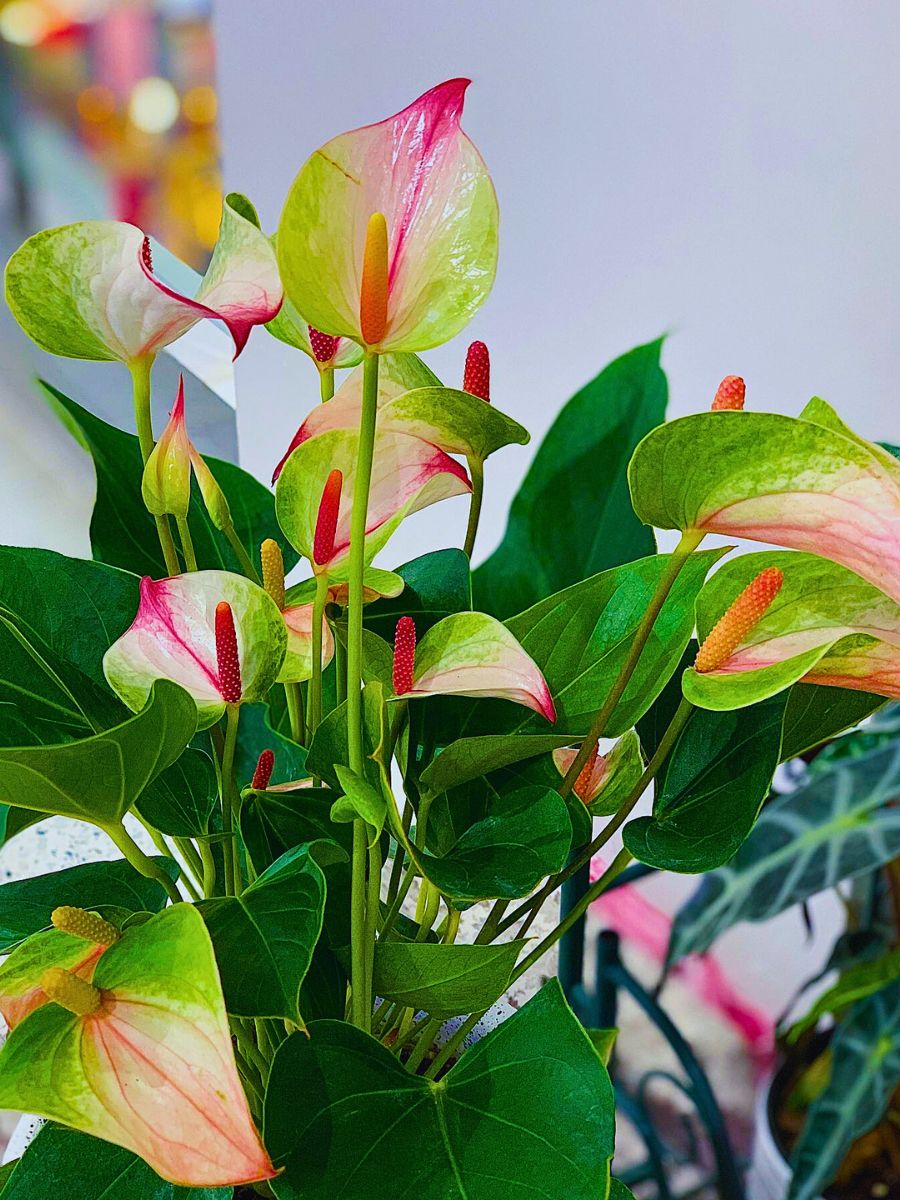
It is pretty easy to propagate these Anthurium lilies, but first, maintain high levels of hygiene, and disinfect your cutting tools and other necessary tools needed during the propagation process to avoid the spread of any bacteria or encourage their infestation. Propagate the flamingo lily by cutting the stems and placing them in a rooting mix, and transplant once rooted or through the division of a mature plant from the roots into multiple mini-anthurium plants, which can also be transplanted to independent pots.
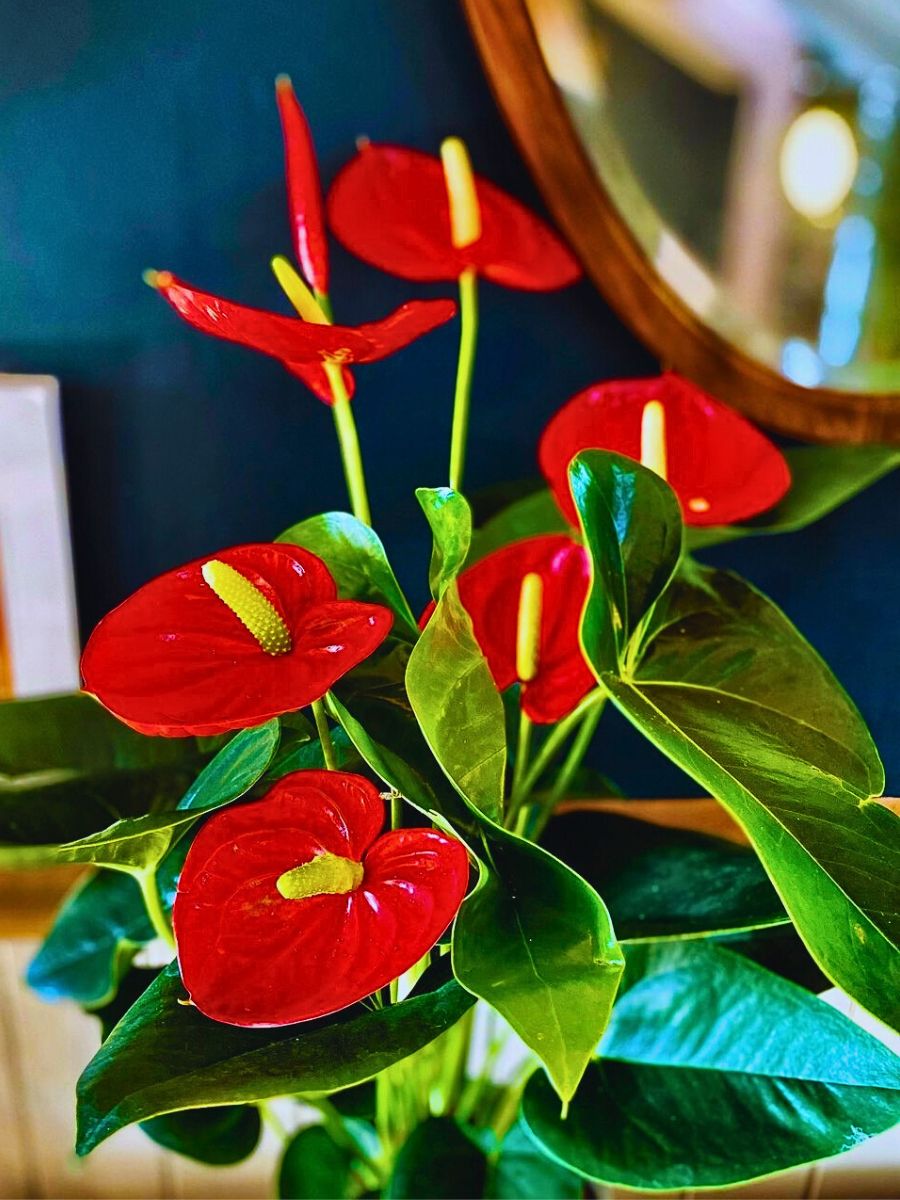
Essential Flamingo Tips for Success With the Anthurium Lily
Being keen on the above care guide for the Anthurium lily will contribute to you being a great anthurium parent, leading to your plant rewarding you with sleek and long-lasting flamingo flowers. Though blooming may take longer than expected, the wait is always worth it because once the flowers emerge, you will enjoy them for up to 90 days and sometimes even more than 100 days depending on the variety and its respective breeder.
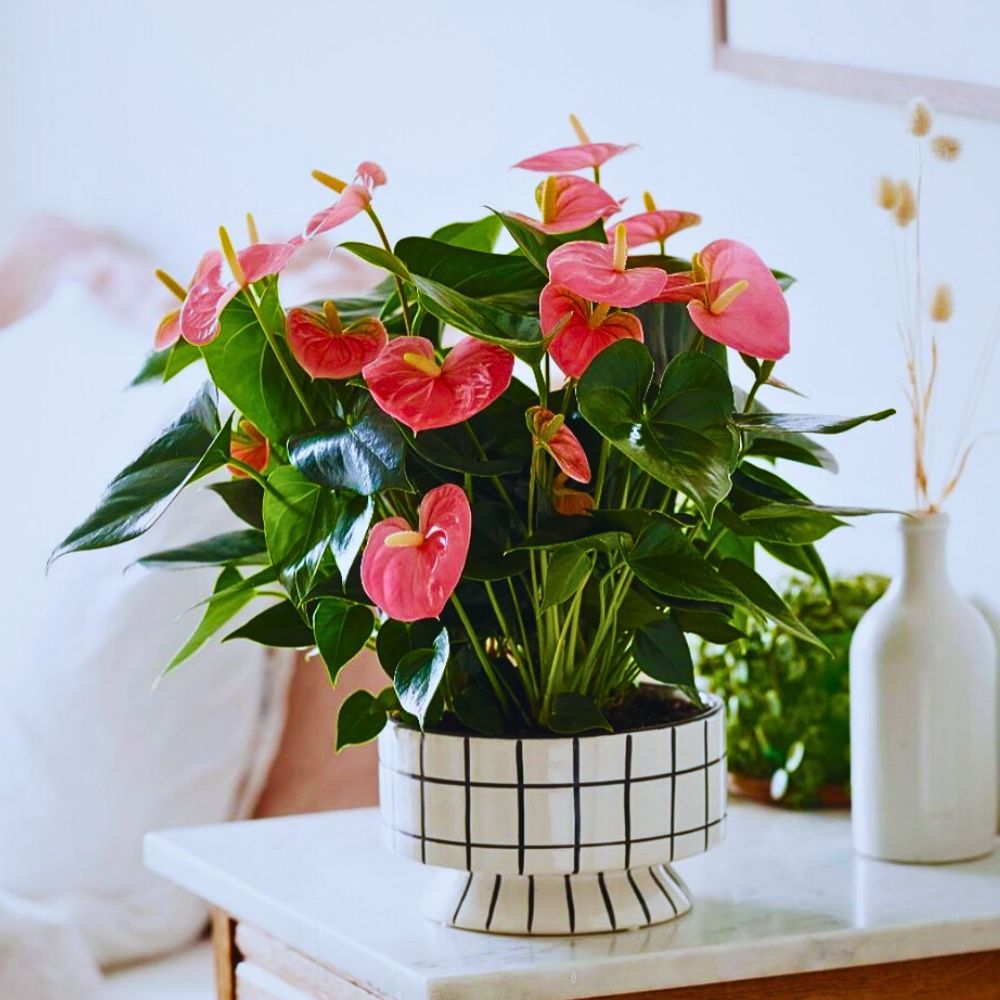
Photo by @houwenplant
As a symbol of love and hospitality, the flamingo flower plant is such a delight and a great addition for all houseplant parents, whether in tropical zones or colder regions. You will always have a worthwhile experience with the magic touch, moving character, and presence of the flamingo lily.
Feature image by @houwenplant. Header image by @thewheatweaver.



